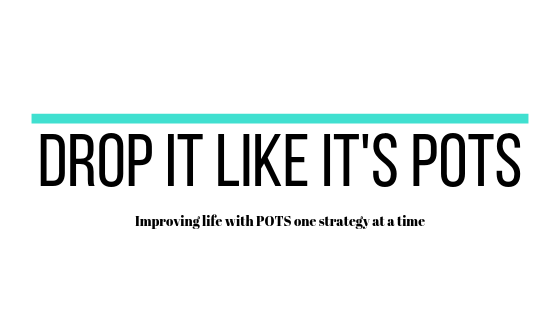Wow again! This conference has been very educational and exciting. I believe Dysautonomia International is going to keep the registration page open for a while, so you can still sign up if you want to receive the recordings of all the sessions.
Autonomic Dysfunction in ME/CFS- Dr. Peter Rowe
I was really excited about this talk since I also discuss ME/CFS in this blog. Dr. Peter Rowe is another fierce advocate for our community and this talk was excellent.
- It seems that most post-viral cases of ME/CFS occur after a severe infection. The opposite seems to be true with COVID-19 so far, though.
- There are two peaks of incidence in age groups concerning ME/CFS- 10-19 and 30-39.
- Dr. Rowe spoke passionately about the fact that cognitive behavioral therapy (CBT) and graded exercise therapy (GET) are rightfully waning as the treatment for ME/CFS. This is due to the actual effects being modest, there are no studies on how these affect severe ME/CFS cases, there was research misconduct in the primary source of this information (PACE trial), and the fact that rigid advancement of graded exercise can cause harm to some ME/CFS patients.
- The main point to this lecture is that there is a very high prevalence of orthostatic intolerance in patients with ME/CFS.
- Therefore, treating orthostatic intolerance is important to managing ME/CFS.
- Dr. Rowe discussed a study on 429 adults with ME/CFS. 28% had POTS. 14% had orthostatic hypotension. 58% had normal heart rate and blood pressure. These same individuals were tested for the reduction of cerebral blood flow (blood flow to the brain) upon standing. In the healthy controls, cerebral blood flow dropped 7%. Cerebral blood flow dropped 26% in the ME/CFS patients. This means ME/CFS patients experience nearly 4 times the drop in cerebral blood flow compared to healthy individuals. One of the most important notes of this study demonstrates that the group of ME/CFS patients that had a “normal blood pressure and heart rate”, even they experienced a 24% reduction in cerebral blood flow upon standing. That means, there is a group of ME/CFS patients that are experiencing orthostatic intolerance, but are not meeting the criteria of a traditional diagnosis and therefore missing out on treatment options.
- Cerebral blood flow decline was the same between conditioned and deconditioned ME/CFS patients, which is further evidence that conditions like ME/CFS and Dysautonomia are not caused by deconditioning.
- The cerebral blood flow testing is only done on a research level at this time.
- Dr. Rowe explains how telling ME/CFS patients to just start exercising without any interventions would be like telling an asthmatic to go run a lap before giving them an inhaler. Patients need to have their medical problems addressed (like orthostatic intolerance), and then perhaps they may be able to tolerate some gradual exercise.
- An example would be a 22 year old patient he had. She literally could not exercise. After proper treatment (Ivabradine worked well for her), she was able to begin exercising starting at just 3 minutes and eventually working up to the 10 mile hikes she does today. Everyone is different, but I relate to this story. Once I finally received proper treatment, it worked as a bridge for me to exercise and then reap the benefits of that exercise.
- Dr. Rowe cracked me up with this low-key quip- to paraphrase, he said “I’d like to see that physicians that advocate for cognitive behavioral therapy as a cure to try and exercise with the level of decreased cerebral blood flow these patients have”. Say it louder for the people in the back.

- Dr. Rowe briefly touched on ME/CFS and orthostatic intolerance in COVID-19. He has a 30 year old patient who is a high-level scientist. By day 10 of COVID she couldn’t make sense of her bank statement or follow the plot of a tv show. This is validating to those of us who experienced a rapid onset of brain fog.
- He said that anybody with severe fatigue post-COVID needs to be assessed for orthostatic intolerance.
- He has a post-COVID patient that was a cross-country runner. That male patient now experiences 4-5 days of post-exertional malaise after playing bags (a.k.a cornhole).
- Dr. Rowe feels ivabradine is safe for long-term use based on the information they currently have.
- He feels seeing a manual physical therapist to address muscular and tissue imbalances is an important part of recovery.
- 30% ME/CFS patients have a milk protein intolerance. Dr. Rowe mentioned that it may be wise to drop dairy if you have ME/CFS because it could then interfere with the efficacy of medications.
Post-COVID-19 Autonomic Dysfunction- Dr. Mitchell Miglis
I was struck in this lecture by how little we know about COVID-19. Dr. Miglis even said himself that he had trepidation to give this lecture as we need much more data to discuss this topic. Kudos to Dr. Miglis and others that are studying this very important topic and treating COVID long haulers.
- Dr. Miglis discussed a few case studies where patients developed Dysautonomia post-COVID-19.
- He discussed the studies on other related post-viral conditions such as post-SARS and post-MERS syndromes. Very little is known about those, either. Basically, we know that some people develop ME/CFS-like illnesses after contracting these diseases. There was a small (only 14 patients) study done on post-SARS patients that found that 4 out of the 14 had abnormalities in a standing test.
- COVID-19 is less deadly than SARS and MERS with a mortality rate around 2-3% (although this is still somewhat unclear).
- Around 10% of COVID-19 patients experience chronic symptoms. I thought this figure was quite high. I can’t remember if this figure came from a study or a survey. When I get the slides in about a month, I will look into this stat.
- In a study looking at 841 hospitalized COVID-19 patients about 57% had neurological symptoms and 2.5% had Dysautonomia (although Dr. Miglis mentioned that this was not specifically defined).
- The mechanism in which COVID-19 affects the nervous system in unclear.
- Damage from COVID-19 could be due to a “cytokine storm” (an inflammatory response).
- In a study looking at 143 Italian COVID-19 survivors, after 60 days, 87% still had symptoms. After 4 months 50% were still having symptoms, 30% were having breathing difficulty and lung scarring, and 30% had clotting abnormalities.
- In a survey of 300 COVID-19 long-haulers: 55 report developing an autoimmune disease, 124 report developing Dysautonomia, 133 report having difficulty doing basic activities, and 61 are concerned that they won’t be able to return to work.
- As I mentioned in the previous lecture notes, it seems that patients that are becoming long-haulers typically had mild to moderate acute onset symptoms of COVID-19.
- Many COVID-19 long haulers indicate that their symptoms wax and wane (they call it the Corona-coaster).
- Potential mechanisms of these post-COVID-19 syndromes could include: persistent cardiac or pulmonary injury (50% of COVID survivors in Bergamo have lung dysfunction at 4 months out), direct neuroinvasion of brain or brainstem by COVID (SARS can infect the brain stem of rats), damage of peripheral nerves (ex. neuropathic POTS), indirect neuronal injury and glial activation (persistent inflammatory response), or mast cells may be involved in the cytokine storm seen in ARDS in severe COVID-19.
- In considering treatment, Dr. Miglis states that it is important to rule out cardiopulmonary and thromboembolic disease. He said they are “not there yet” to recommend IVIg for these post-COVID-19 patients unless they also have an underlying autoimmune disease. He wonders if neuromodulators of vagal nerve stimulation (see Dr. Kevin Tracey’s lecture from Day 2) could be useful.
- In Dr. Miglis’ patients with pre-existing POTS that got COVID-19, most experienced a fairly severe exacerbation of POTS along with some new pulmonary symptoms. The Dysautonomia International advisory board concurs in the sense that most Dysautonomia patients experience exacerbation with any illness. However, it does not seem that Dysautonomia patients are at higher risk of severe complication of COVID-19.
Expert Q&A- Comorbidities- Dr. Clair Francomano, Dr. Brent Goodman, and Lauren Stiles JD
I’m going to be totally honest here, my brain started to go a wee bit downhill at this point. So, bear with me as my notes diminished.

- Common comorbidities include: MCAS, Ehlers Danlos, sleep disorders, GI dysfunction, brain fog (Dr. Goodman considers this a comorbidity), Sjogren’s, and other autoimmune diseases. As Lauren Stiles put it, “Autoimmune diseases tend to invite more friends to the party.”
- Dr. Goodman said some symptoms that would raise red flags to him to investigate autoimmune diseases in Dysautonomia patients would include: the abrupt onset of Dysautonomia, rapid weight loss at the onset of the Dysautonomia, a strong family history of autoimmunity, and mast cell symptoms.
- Lauren Stiles reiterated what Dr. Tracey said in the keynote address that it is possible that POTS drives autoimmunity due to the hyperadrenergic state.
- Dr. Francomano is an expert in the realm of Ehlers Danlos and she said that typically those patients feel less hopeful because their cause of Dysautonomia is genetic. However, she finds that many can also experience significant improvement with proper treatment.
- They referenced a study where patients post-concussion complaining of dizziness actually had normal vestibular testing results, but their dizziness was due to POTS and OH. The point is that orthostatic intolerance is a common post-concussive finding.
Stories of Hope and Recovery- Anoushe Husain, Meredith Brooks, and Jacqueline City
What struck me most and encouraged me about these stories was that none of these women were cured despite being the “stories of hope and recovery”. That may sound like a weird thing to be encouraged about, but bear with me. For most people, Dysautonomia is chronic. So, these stories were realistic. They found a path that works for them in living with Dysautonomia.
The three women described a nonlinear path of healing and all said that their symptoms are still a daily struggle. Yet, they have found a place where they are thriving despite their challenges. They have found a medical and adaptive regimen that works best for them. As Jacqueline City called it, “A new way to live.”
Disclaimer: I am not a medical professional. Statements on this site are not meant to be taken as medical advice. These statements reflect my personal experiences having mild-ish post-viral POTS and ME. Due to the wide spectrum of these diseases, comorbidities, and everyone being different, your experiences may be very different than mine.
Note: If you post a comment, this site does NOT have a feature to notify you of responses to your comment. I have not found a good solution for that yet. However, I usually respond to every comment in a timely manner, so be sure to check back.

4 Comments
Awesome notes! My hat is off to you! So many poly-syllabic words! I can hardly keep up with a church board meeting. My brain is full just reading your notes! I’m glad you got so much out of it. I hate going to a seminar & it’s nothing what I thought it would be.
Thanks Donna! LOL, yeah, my brain is jello for sure. I had a zoom meeting for something else after the conference last night… let’s just say I nodded and smiled a lot.
…their symptoms are still a daily struggle. Yet, they have found a place where they are thriving despite their challenges.
That is so encouraging to read! Yes!